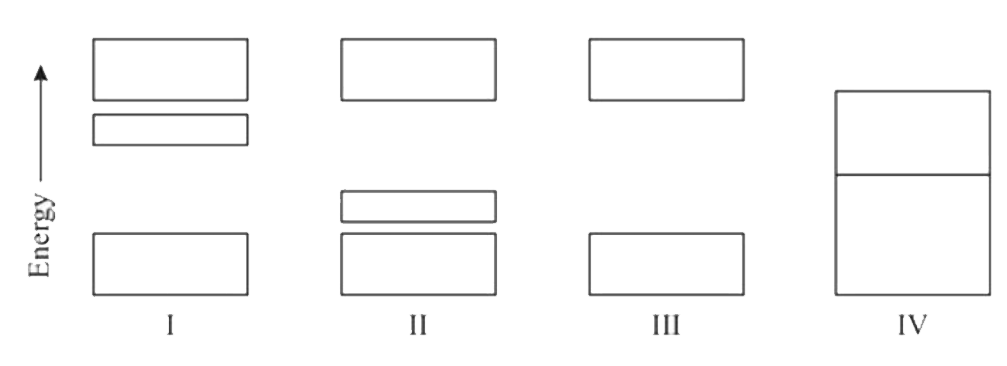A p-type semiconductor is
positive charged
negetively charged
uncharged
uncharged at 0K byt charged at higher temperatures.
The correct Answer is:C
To solve the question regarding the nature of a p-type semiconductor, let's break it down step by step:
Step 1: Understanding the Definition of a p-type Semiconductor
A p-type semiconductor is formed when a trivalent impurity (such as boron) is added to a pure semiconductor (like silicon). This process creates "holes" in the semiconductor's crystal lattice.
Hint: Remember that p-type refers to the presence of holes, which are the absence of electrons.
Step 2: Analyzing the Charge Carriers
In a p-type semiconductor, the added trivalent atoms create holes because they have one less electron than the semiconductor atoms they replace. Each hole can be thought of as a positive charge carrier.
Hint: Consider what happens to the electron count when trivalent atoms are introduced.
Step 3: Impurity Atoms and Their Charge
The impurity atoms (e.g., boron) are deficient in one electron, which means they effectively create a positive charge (due to the absence of an electron). However, these impurity atoms themselves do not carry a net charge; they are neutral in the lattice.
Hint: Focus on the relationship between the holes created and the charge of the impurity atoms.
Step 4: Overall Charge of the p-type Semiconductor
While there are many holes (positive charge carriers) in a p-type semiconductor, the number of negatively charged impurity atoms (due to their deficiency of electrons) is equal to the number of holes. Therefore, the overall charge of the p-type semiconductor remains neutral.
Hint: Think about how the positive and negative charges balance each other out.
Step 5: Conclusion
Based on the analysis, the correct answer to the question "A p-type semiconductor is" is that it is electrically uncharged overall. Thus, the correct option is "uncharged."
Final Answer: A p-type semiconductor is uncharged.
A p-type semiconductor is formed when a trivalent impurity (such as boron) is added to a pure semiconductor (like silicon). This process creates "holes" in the semiconductor's crystal lattice.
In a p-type semiconductor, the added trivalent atoms create holes because they have one less electron than the semiconductor atoms they replace. Each hole can be thought of as a positive charge carrier.
The impurity atoms (e.g., boron) are deficient in one electron, which means they effectively create a positive charge (due to the absence of an electron). However, these impurity atoms themselves do not carry a net charge; they are neutral in the lattice.
While there are many holes (positive charge carriers) in a p-type semiconductor, the number of negatively charged impurity atoms (due to their deficiency of electrons) is equal to the number of holes. Therefore, the overall charge of the p-type semiconductor remains neutral.
Based on the analysis, the correct answer to the question "A p-type semiconductor is" is that it is electrically uncharged overall. Thus, the correct option is "uncharged."
Topper's Solved these Questions
- SEMICONDUCTOR AND SEMICONDUCTOR DEVICESBOOK - HC VERMA ENGLISHCHAPTER - SEMICONDUCTOR AND SEMICONDUCTOR DEVICESEXERCISE - objective II
8 Videos
- SEMICONDUCTOR AND SEMICONDUCTOR DEVICESBOOK - HC VERMA ENGLISHCHAPTER - SEMICONDUCTOR AND SEMICONDUCTOR DEVICESEXERCISE - exercises
35 Videos
- SEMICONDUCTOR AND SEMICONDUCTOR DEVICESBOOK - HC VERMA ENGLISHCHAPTER - SEMICONDUCTOR AND SEMICONDUCTOR DEVICESEXERCISE - Worked out examples
11 Videos
- PHOTOMETRYBOOK - HC VERMA ENGLISHCHAPTER - PHOTOMETRYEXERCISE - All Questions
38 Videos
- SPEED OF LIGHTBOOK - HC VERMA ENGLISHCHAPTER - SPEED OF LIGHTEXERCISE - Question for short Answer
5 Videos
Similar Questions
Germanium has been doped with impurity as shown in I, II, III and IV and based as it statements

A. n-type semiconductor is formed in I and III
B. p-type semiconductor is formed in II and IV
C. P-type semiconductor is formed in II and IV
D. p-type semiconductor is formed in I and III Select the correct statement(s).
View Solutionn-type semiconductor is
View SolutionA N - type semiconductor is
View SolutionThe band structure in n - type semiconductor is

View SolutionThe valance of the impurity atom that is to be added to germanium crystal so as to make it a N-type semiconductor, is
View SolutionWhat are n-type and p-type semiconductors?
View SolutionNon-stoichiometric cuprous oxide. Cu2O can be perpared in laboratory. In this oxide, copper-to-oxygen ratio is slightly less than 2 : 1. can you account for the fact that this substance is a p-type semiconductors?
View SolutionNon-stoichiometric cuprous oxide. Cu2O can be perpared in laboratory. In this oxide, copper-to-oxygen ratio is slightly less than 2 : 1. can you account for the fact that this substance is a p-type semiconductors?
View SolutionA 0K temperature, a p-type semiconductor
View SolutionFor a p-type semiconductor, which of the following statements is true?
View Solution
